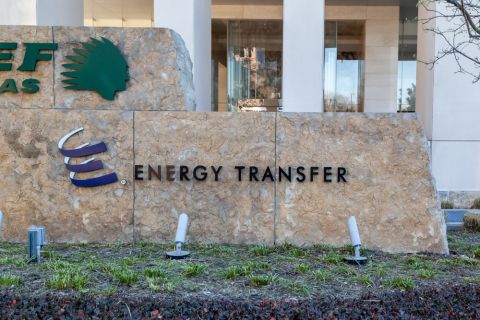Presented by:

[Editor's note: A version of this story appears in the April 2021 issue of Oil and Gas Investor magazine. Subscribe to the magazine here.]
I don’t know about you, but I’m getting weary of all this energy transition talk.
The weeklong virtual roundtables and plenaries at CERAWeek by IHS Markit in early March featuring discussion after discussion on how fast the world can pivot to 100% “clean” energy sources, I think, oversaturated my sensibilities. It’s as if the industry that fueled world development over the past century no longer matters. Not even a thank you or going away party as they introduce the new stars of zero emissions.
Don’t get me wrong, I support most all of the new technologies being developed to provide for our ever-growing energy needs. I believe the world needs every source of energy it can economically produce and that can viably compete for market share, and I expect some version of an energy transition will occur in time. I just don’t believe one should be at the exclusion of another, as is happening now with hydrocarbon fuels.
Indeed, the social and regulatory environment to demonize fossil fuels could have unexpected near-term consequences for those that wish for green-only subsistences.
The International Energy Agency—certainly a proponent of aforesaid energy transition—in March clanged a bell alerting an impending and dangerous undersupply of global crude to meet demand that is yet to be underpinned by alternative energy sources. The organization, in its annual medium-term market report, predicted global oil demand to largely shake off the pandemic-impacted decline and grow to 104 million barrels a day (MMbbl/d) by 2026, 4% higher than 2019 volumes, based on existing consumer behaviors and government policies.
To meet the projected demand growth, crude supplies will need to increase by 10 MMbbl/d in that timeframe, it said, but projects a production capacity increase of only 5 MMbbl/d by 2026. Thus, world oil markets “still face a high degree of uncertainty that is testing the industry as never before.”
Of course, the agency calls for governments and consumers to hasten change away from fossils to nip this coming gap, but the answer might be more conventional: opportunistic capital.
Wells Fargo analyst Nitin Kumar, in a series of research reports in March, said the transition back into oil and gas equities is already underway.
Since September, he noted, the XOP index is up 96% versus 19% for the S&P 500, illustrating a “significant reversal in the U.S. E&P sectors fortunes from just six months ago.”
The focus among U.S. E&P investors has shifted from “value versus survivability,” he said, to “value versus momentum.” Stocks that seemed on the verge of financial distress just six months ago when WTI was struggling to hold $40/bbl have been the biggest outperformers within the firm’s coverage group. Kumar seems somewhat taken aback at what he views as “almost indiscriminant buying in the sector” that has created “a momentum trade that is hard to ignore.
“Admittedly, the strength in the sector has surpassed our expectations, and we were not bearish to begin with.”
At the crux, he said, is operator willingness to stay true to a model prioritizing capital discipline, moderated growth plans and an emphasis on free-cash-flow generation. Coming out of fourth-quarter earnings, E&Ps “passed with flying colors.”
Following a couple of decimating years for private equity-backed E&Ps, green shoots are evident here as well. Truist analyst Neal Dingmann, commenting on Norwegian IOC Equinor’s exit from the Bakken Shale to EnCap Investments-backed Grayson Mills Energy in February, suggests a trend away from foreign capital and upward trending participation once again from the private equity-backed producers.
“We find the deal interesting in a number of respects, the primary two being the continued exit from U.S. assets by foreign operators and the re-emergence of U.S. private equity in U.S. upstream,” he said. “Based on this deal announcement and our recent conversations with private E&Ps suggests to us that there could be a number of PE-backed entities back looking at oil and gas assets throughout the U.S., which we think could potentially help boost future asset sales prices versus lows seen the past 18 years.”
So while the squawk box is on energy transition, capital is once again flowing into black gold. Reports of the oil and gas sector’s death, it seems, are greatly exaggerated.
Said Kumar, “The U.S. E&P sector should benefit as a whole from higher market valuations as ‘survival’ becomes less of a concern. But the interplay between technicals and fundamentals will keep investors on their toes. Let the games begin!”
Speaking of opportunistic capital, join us in Dallas June 2 for Oil and Gas Investor’s Energy Capital Conference, where we’ll talk with energy financiers on where the money is trending, plus we’ll network live and in person once again! Go to hartenergyconferences.com/energy-capital-conference.
Recommended Reading
Ozark Gas Transmission’s Pipeline Supply Access Project in Service
2024-04-18 - Black Bear Transmission’s subsidiary Ozark Gas Transmission placed its supply access project in service on April 8, providing increased gas supply reliability for Ozark shippers.
Scathing Court Ruling Hits Energy Transfer’s Louisiana Legal Disputes
2024-04-17 - A recent Energy Transfer filing with FERC may signal a change in strategy, an analyst says.
Balticconnector Gas Pipeline Will be in Commercial Use Again April 22, Gasgrid Says
2024-04-17 - The Balticconnector subsea gas link between Estonia and Finland was damaged in October along with three telecoms cables.
Targa Resources Ups Quarterly Dividend by 50% YoY
2024-04-12 - Targa Resource’s board of directors increased the first-quarter 2024 dividend by 50% compared to the same quarter a year ago.



